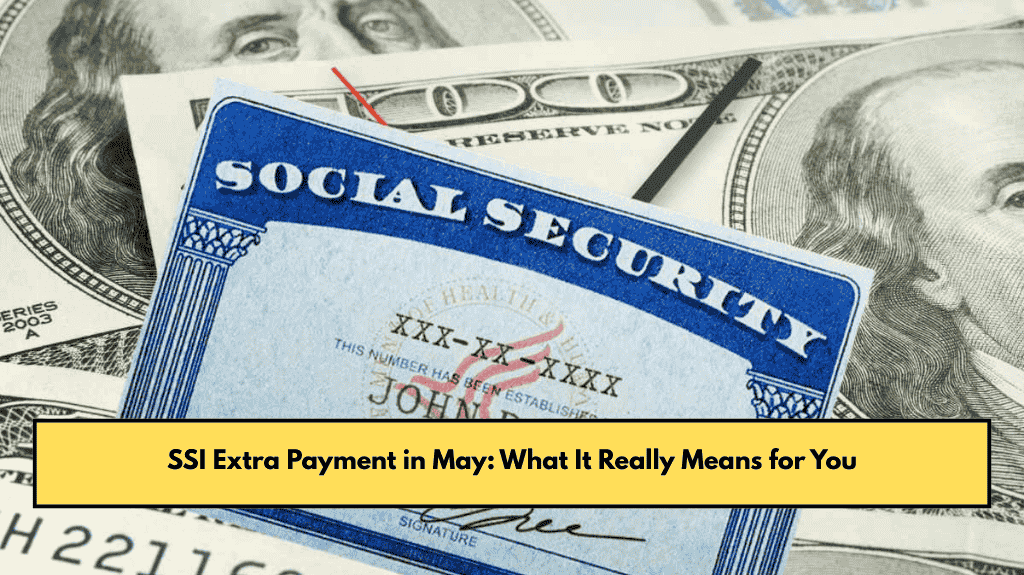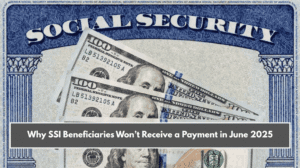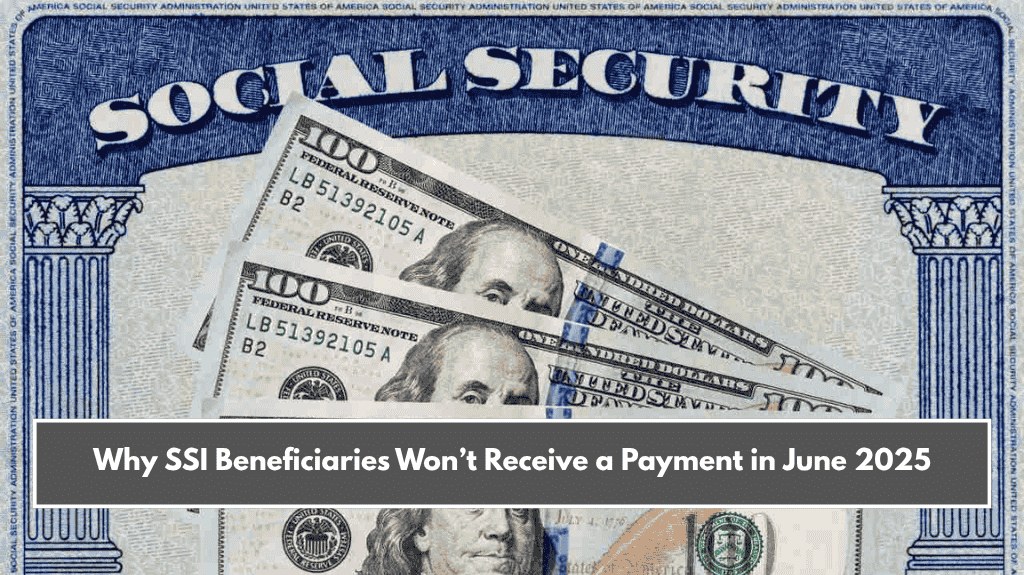Millions of Americans receive Supplemental Security Income (SSI) each month to help cover basic living costs. It’s a program specially meant for people who are low-income, above 65 years old, blind, or disabled. But in May 2025, something a bit unusual is happening—SSI beneficiaries will receive an extra payment. Let’s find out why, what it means, and what to expect in the coming months.
Why There’s an “Extra” SSI Payment in May 2025
The Social Security Administration (SSA) usually sends out SSI payments on the 1st of every month. However, if the 1st falls on a weekend or public holiday, they send the payment a business day earlier.
In this case, June 1, 2025, falls on a Sunday, so the SSA will send the payment on May 30, 2025 (Friday). That’s why many people might think they’re getting two payments in May. But in reality, the second payment is simply June’s payment paid early.
So, remember:
There will be no SSI payment in June 2025. The next payment will arrive on July 1, 2025, as usual.
How Much Will You Receive?
For 2025, the maximum SSI benefit amounts have increased slightly due to a 2.5% cost-of-living adjustment (COLA):
- Individuals can get up to $967 per month
- Couples can receive up to $1,450 per month
This means some recipients may receive up to $2,900 in May due to the early payment for June.
However, these amounts are not the same for everyone. Your actual payment depends on your:
- Income (from work or other benefits)
- Living situation
- Financial help from family or friends
- Assets and savings
Who Qualifies for SSI?
SSI helps people who have little to no income or resources and meet one of these conditions:
Seniors Over 65
You can qualify even if you don’t have a disability, as long as your income and resources are low.
People With Disabilities
You must have a physical or mental condition that seriously limits your ability to work and is expected to last at least one year or lead to death.
Blind Individuals
To qualify as blind under SSI rules, your vision must be 20/200 or worse in your better eye, or your visual field must be 20 degrees or less.

Children With Disabilities
Children must have a condition that severely limits daily functions, expected to last at least one year or result in death.
Financial Limits for SSI
To be eligible, your income and assets must fall under certain limits.
Income Limits
Most people must earn less than $2,019 per month from work. If you’re part of a couple, or a parent applying for a child, different income limits apply. Income can include:
- Salary or wages
- Social Security benefits
- Unemployment
- Veterans benefits
- Help from others (like food or rent)
Resource Limits
Your resources (like cash, bank balance, and property) must be:
- $2,000 or less for an individual
- $3,000 or less for a couple
Citizenship and Residency Requirements
To get SSI, you must be:
- A U.S. citizen or a qualified immigrant (with 40 work quarters or special status)
- Living in one of the 50 U.S. states, Washington D.C., or Northern Mariana Islands
- Not living outside the U.S. for 30 or more consecutive days
- Not staying in a government-funded institution like a prison or public hospital
The so-called “extra” SSI payment in May 2025 is not really extra—it’s simply June’s payment being made early because June 1 falls on a weekend. Still, recipients may feel a bit more financially comfortable in May, especially with the 2025 cost-of-living adjustment that raises the monthly payment amount.
Just keep in mind that no payment will be made in June, and your regular payments will resume on July 1, 2025. If you or someone in your family might qualify for SSI, it’s a good idea to review the requirements and apply through the Social Security Administration (SSA).
This benefit can offer great help to seniors, people with disabilities, and low-income households. Make sure to file your application correctly and keep your income and resource details up to date.















